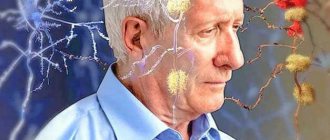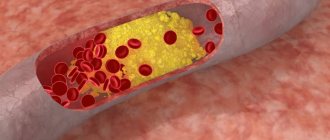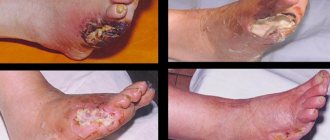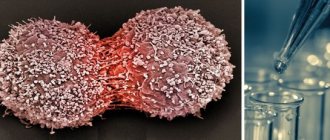Diagnostics
To determine multiple sclerosis, doctors use interviews and neurological examinations, and then confirm the diagnosis with MRI studies and tests.
MRI scans the brain and spinal cord for old and new lesions. For better visualization of fresh plaques, contrast is used. The diagnosis is made if the patient has 4 or more foci of demyelination measuring at least 3 mm, or 3 foci near the lateral ventricles, in the brain stem, cerebellum or spinal cord. In addition to MRI, the following may be prescribed for multiple sclerosis:
- regular blood tests to determine the level of immunoglobulins in the cerebrospinal fluid;
- lumbar punctures to study the composition of the spinal cord fluid.
How to stop multiple sclerosis: treatment of different forms of the disease
Unfortunately, despite progress in MS therapy, it is not yet possible to completely defeat the disease. However, if a person has multiple sclerosis, treatment can help reduce symptoms and reduce the number of relapses. Therapy is prescribed depending on the severity of the disease.
For progressive forms of MS, treatment can help reduce the severity of the disease. Specialists can prescribe:
- plasmapheresis - purification of the patient's blood;
- immunosuppressants - drugs that artificially suppress the immune system;
- immunomodulators are medications that regulate the body's immune response.
To prevent relapses, B-interferons can be used, and to reduce the intensity of symptoms, the following are used:
- vitamins E and B complexes;
- nootropics that improve brain activity;
- anticholinesterase drugs that inhibit the activity of the nervous system;
- muscle relaxants that help reduce muscle tone;
- enterosorbents that help remove toxins.
Causes of development of vascular atherosclerosis
Atherosclerosis of cerebral vessels does not occur due to just one factor; it is usually caused by a complex of reasons. Among them:
- Elderly age. The risk of development increases over the years; this is a natural process of aging of the body.
- Floor. Men are more susceptible. The disease begins at a younger age than in women.
- Lipid imbalance. It is believed that there are “good” lipids - HDL, high-density lipoproteins, and there are “bad” lipids - LDL, low-density lipoproteins. HDL has positive properties: it prevents the formation of cholesterol plaques. LDL, on the contrary, “attracts” cholesterol to the blood vessels.
- Genetic predisposition. Lipid imbalance is sometimes caused by genes. This is the disease familial hypercholesterolemia.
- High cholesterol levels. Cholesterol is one of the main components of plaque on blood vessels.
- Smoking. It has been established that components of tobacco smoke cause vasospasm. In addition, nicotine promotes the attachment of cholesterol plaques to the intima of blood vessels.
- Obesity. In people with excessively developed subcutaneous fat, the balance of lipids in the body is disturbed. Obesity is also a risk factor for diabetes and hypertension. They themselves significantly increase the risk of atherosclerosis. Body weight is assessed using the Quetelet index - BMI = weight, kg / height * height, m2. The normal weight window is from 18.5 to 24.9 kg/m2.
- Physical inactivity. A sedentary lifestyle also affects the body's lipid metabolism. In addition, it is a factor in the development of obesity.
- High blood pressure. Hypertension leads to impaired vascular function. They become more susceptible to atherosclerosis.
- Diabetes. All types of metabolism in the body are disrupted. The concentration of LDL increases, therefore, the risk of atherosclerosis increases.
- Alcohol. Alcohol abuse leads to hypertension and changes in all organs.
- Stress. Negatively affects the tone of cerebral vessels.
Expert opinion
Author: Elena Mikhailovna Bunina
Psychiatrist, doctor of the highest category
Atherosclerosis is considered to be a blockage of the arteries and a decrease in their volume that occurs due to atherosclerotic plaques. It is considered one of the most dangerous ailments, since the disease progresses slowly, but at the same time it strongly constricts the blood vessels, disrupting proper blood circulation, leading to their complete blockage.
Sclerosis of cerebral vessels can be avoided or at least slowed down the progression of the disease if you consult a doctor in time. The most common causes of sclerosis are:
- high blood pressure;
- smoking and excessive consumption of alcoholic beverages;
- high blood cholesterol;
- constant stress;
- excess body weight;
- sedentary lifestyle;
- diabetes;
- unhealthy diet with excess fat in the diet.
If you keep these factors under control, you can reduce your risk of developing the disease. The peculiarity of the course of the disease is that even with an individual approach to treatment and effective therapy, blockage of blood vessels cannot be completely cured. Medicines and other methods of combating the disease can only slow down the growth of atherosclerotic plaques; with more intensive treatment, they can be reduced in size.
The doctor prescribes treatment for each patient individually, based on the initial condition and severity of the disease. Doctors at the Yusupov Clinic will conduct a comprehensive examination of the patient and prescribe treatment in accordance with the diagnosis and side effects of the disease.
Rehabilitation for multiple sclerosis
- Physiotherapy.
Exercise therapy helps improve a person’s condition with impaired motor activity. Working out on exercise machines helps restore coordination of movements. With correctly selected loads, the method demonstrated excellent efficiency. - Physiotherapy.
For patients with MS, electrophoresis, myostimulation, ultrasound, and magnetic therapy are recommended. These techniques help to activate the body's metabolic processes and reduce inflammation. - Massage.
For multiple sclerosis, this rehabilitation method can be used to relieve pain symptoms and spasms. Massage also helps improve muscle tone when it decreases.
Rehabilitation for multiple sclerosis also includes psychotherapy, which will help the patient cope with negative thoughts, as well as consultations with a nutritionist.
Disease prognosis
Multiple sclerosis is not considered a fatal disease; the unpleasant symptoms of MS can be quite successfully treated. Scientists have found that thanks to modern treatment, the life expectancy of patients today has increased significantly compared to those who fell ill even a few decades ago.
Overall, people with multiple sclerosis live on average 7 years less than the general population. Often, a decrease in life expectancy is associated with complications of other pathologies: cancer and cardiovascular diseases. For many patients, quality treatment can prevent a decline in quality of life and productivity. According to the National Multiple Sclerosis Society, ⅔ of people with MS are wheelchair-free even 20 years after diagnosis.
Disability in multiple sclerosis
| If multiple sclerosis has caused disability for 5 months or more within a year, the patient can apply for disability registration. |
After reviewing the documents, the commission will make a decision on incapacity for work, which gives the right to receive a pension and preferential working conditions. The establishment of a disability group is influenced by:
- the period for which the ability to work was lost;
- the period when the patient was registered with this disease;
- frequency, duration and severity of exacerbations;
- therapy results;
- changes in the course of the disease, the rate of development of symptoms.
Disability is assigned for a year, after which it is necessary to pass the commission again. Disability of groups I and II with MS gives the right to a reduced working day - 35 hours per week. In this case, wages are paid in full.
Amyotrophic lateral sclerosis - symptoms, diagnosis and treatment prospects
This disease is known under several names adopted in various medical schools. In Russian medicine it is known as “Charcot’s disease”, in honor of the doctor who first described it. It is also known as Lou Gehrig's disease. It progresses slowly, the symptoms increase very slowly, but inevitably. To date, it is not treatable. During the course of the disease, the nuclei of nerve cells in the spinal cord and brain, which are responsible for muscle control, are affected. This leads first to paralysis, then to atrophy of all human muscles.
Etiology of the disease
To date, the cause of the disease is unknown. It is diagnosed annually in approximately 0.1-0.2% of the population. Diagnosis is usually made only between the ages of 40 and 60 years. Of these, in 5-10% the disease is inherited.
In 20% of cases, patients are found to have a mutation on chromosome 21 (superoxide dismutase-1). An excessive amount of glutamic acid plays a major role in the development of the disease, which causes hyperexcitation and subsequent destruction of neurons. However, what causes the disease in the remaining 80% is still unknown.
There is a form of this disease that for some reason only affects residents of the island of Guam.
Sometimes the disease is caused by contact with pesticides. But the influence of previously suffered diseases, injuries of various kinds, or deterioration of the general environmental situation on morbidity was not detected.
Clinical picture of the disease
Symptoms of the disease are:
- general weakness;
- the occurrence of spasmodic muscle contractions;
- difficulties with swallowing movements;
- deterioration of speech functions;
- loss of balance;
- changes in reflexes;
- muscle atrophy;
- “foot hanging” effect;
- violation of free breathing;
- attacks of uncontrollable emotions - from crying to laughter;
- frequent depression.
Among the initial symptoms, it is necessary to note muscle twitching, involuntary contractions, a feeling of weakness in the limbs, and speech impairment. However, it should be noted that making an accurate diagnosis at the beginning of the development of the disease is almost impossible; conventional treatment of the spine is prescribed. A correct diagnosis can only be made at the stage when muscle atrophy has begun.
The disease can begin with damage to various parts of the body. Consider, for example, amyotrophic lateral sclerosis of the extremities. One or both legs are affected initially. The main complaints are about the inconvenience experienced when moving. The patient's ankle joints stop working. As a result, he often stumbles. Then disturbances in the work of the hands begin, and it becomes difficult to carry out usual actions.
If the disease occurs in the bulbar form, speech is the first to suffer. The patient begins to lisp, pronounce words “in the nose”, and difficulties appear in controlling the volume of what is spoken. At the second stage, difficulties with swallowing begin. As the disease progresses, more and more muscle groups become weaker. However, paresis of the limbs usually does not occur. Breathing is the first to fail, and death from suffocation follows.
As the disease progresses, the ability to move is lost. However, mental abilities are not affected in any way. Because of this, deep depression often sets in, since the patient clearly understands that a painful, slow death awaits him. At the last stage of the disease, breathing is supported by a ventilator.
Diagnostic methods and treatment attempts
At the initial stage, diagnosing the disease is difficult, and the diagnosis can only be made if other similar, but not fatal, diseases are excluded. A variety of diseases can have similar manifestations. Therefore, a diagnosis can only be made when the disease is sufficiently advanced and the symptoms become obvious.
As for treatment, it does not exist today. After all, the cause of the disease, that is, the mechanism of development of the disease, is unknown. There is currently only one drug that can slow the progression of the disease, but does not stop it completely. This is riluzole, which slows down the production of glutamate. Attempts to influence the disease by other means have not yet brought success.
From the moment the disease is diagnosed to the death of the patient, it usually takes from 3 to 5 years.
Many live much longer. For example, theoretical physicist Stephen Hawking has been living with this diagnosis since the early 1960s, or James Becker, who was diagnosed in the 1980s. They and many others continue to fight the disease. Their condition stabilized over time, although at a fairly serious level. Author: K.M.N., Academician of the Russian Academy of Medical Sciences M.A. Bobyr









